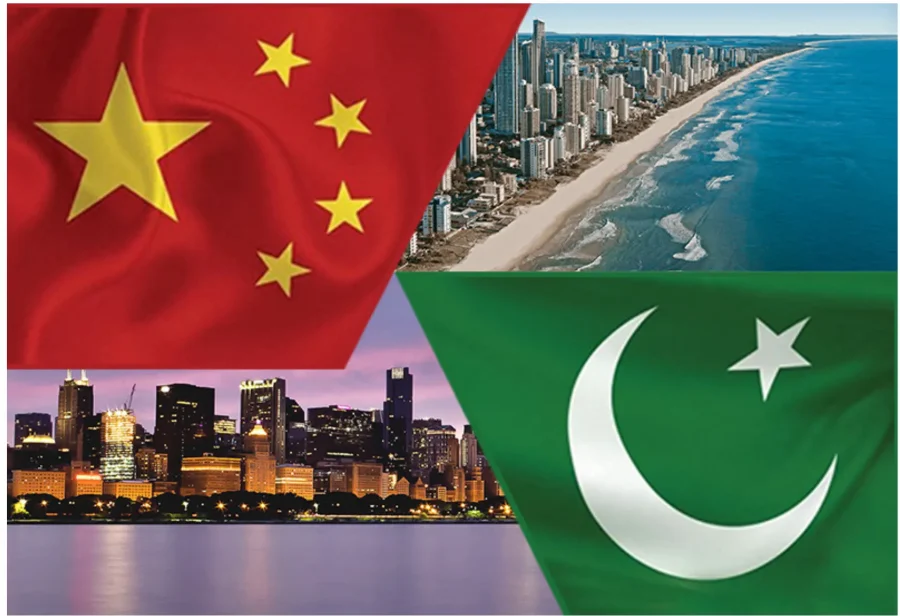The China-Pakistan Economic Corridor (CPEC) stands as a transformative and strategically significant initiative, fundamentally altering the geopolitical landscape of South Asia. Inaugurated in 2013 as a flagship component of China’s ambitious Belt and Road Initiative (BRI), CPEC seeks to enhance connectivity and cooperation between China and Pakistan through an extensive network of roads, railways and energy projects extending from China’s Xinjiang region to Pakistan’s Gwadar Port on the Arabian Sea. While its economic benefits are substantial, the corridor’s geopolitical ramifications are profound, positioning Pakistan as a pivotal player in China’s expansive strategic vision. The deepening Sino-Pakistani alliance has intensified regional rivalries, particularly with India, and has recalibrated the strategic calculations of global powers such as the United States. This article explores how CPEC is reshaping regional politics, examining the evolving alliances, emerging security challenges and broader geopolitical consequences of this landmark initiative.
Historical Context and Evolution of CPEC: To comprehend the current state of CPEC, it is imperative to delve into its historical genesis and evolution. Simply stated, CPEC is a sub-project of China’s stellar Belt and Road Initiative, aimed at enhancing global connectivity, transportation and trade. Although primarily centred in South Asia, China envisions expanding this colossal endeavour to other regions as well. CPEC was formally launched on April 20, 2015, when the then Prime Minister Nawaz Sharif signed an array of pacts with Chinese President Xi Jinping, amounting to $46 billion. The primary objective of these agreements is to modernize Pakistan’s transportation infrastructure and link Karachi and Gwadar to the Xinjiang Uygur Autonomous Region in China via overland routes. This integration would significantly reduce China’s transportation costs and provide direct access to the Indian Ocean, thereby extending its trade reach.
Advantages of CPEC for Pakistan: The advantages of CPEC for Pakistan are conspicuous and manifold. China has pledged to modernize Pakistan’s highways and railways, thereby enhancing connectivity both internationally and domestically. The development and modernization of Gwadar Port will furnish Pakistan with another deep-sea port, substantially augmenting its sea trade volume. Moreover, CPEC encompasses a multitude of projects aimed at mitigating Pakistan’s chronic energy crisis. Noteworthy among these are initiatives focusing on renewable energy sources such as solar and wind energy, exemplifying a commendable stride towards sustainable development. CPEC is also poised to generate up to 236,000 direct jobs, addressing the severe unemployment issues plaguing Pakistan.
Advantages of CPEC for China: Conversely, CPEC offers an array of strategic advantages for China. Primarily, it provides China with direct access to the Arabian Sea, facilitating a land route that significantly reduces trade time and costs. This route enables China to circumvent the Strait of Malacca, a critical naval choke-point in the disputed South China Sea. Additionally, CPEC allows China to extend its investment interests abroad, thereby bolstering its economic prowess. This corridor provides China with a geopolitical advantage, enabling it to extend its influence over South Asia and Central Asia, thereby asserting itself as a regional superpower.
In conclusion, the China-Pakistan Economic Corridor (CPEC) stands as a monumental project that not only symbolizes the deepening ties between China and Pakistan but also showcases the transformative potential of strategic economic initiatives. For Pakistan, CPEC promises a wave of modernization, from upgraded infrastructure and energy solutions to significant job creation and economic revitalization. The development of Gwadar Port and improved connectivity are set to position Pakistan as a crucial player in regional trade dynamics. For China, CPEC offers a strategic gateway to the Arabian Sea, bypassing traditional maritime chokepoints and reducing transportation costs. This enhanced connectivity supports China’s broader Belt and Road Initiative, facilitating greater economic integration and influence across South Asia and beyond. The benefits extend beyond economics, positioning China as a dominant geo-political force and a leader in regional development. The multifaceted advantages of CPEC underscore its significance in reshaping regional politics, fostering economic growth, and enhancing bilateral cooperation. As CPEC continues to progress, it will likely serve as a blueprint for future international partnerships, demonstrating how strategic infrastructure investments can drive profound regional transformations. Ultimately, CPEC is not just a corridor for trade, but a bridge to a future of enhanced cooperation, stability, and prosperity for both nations.










